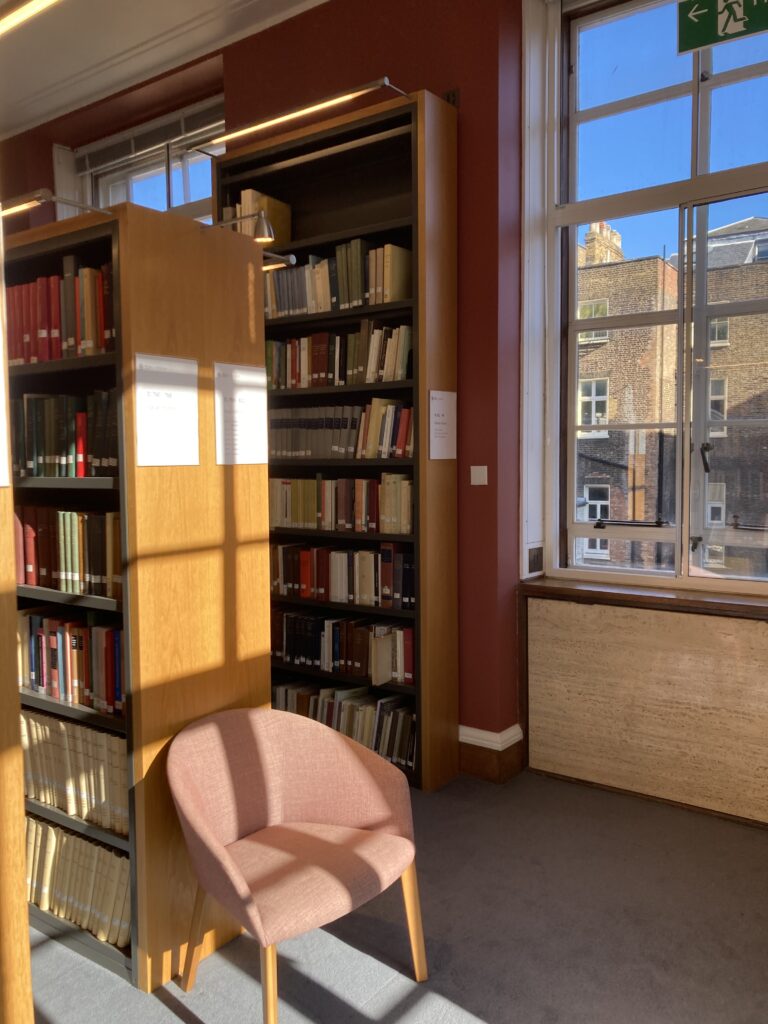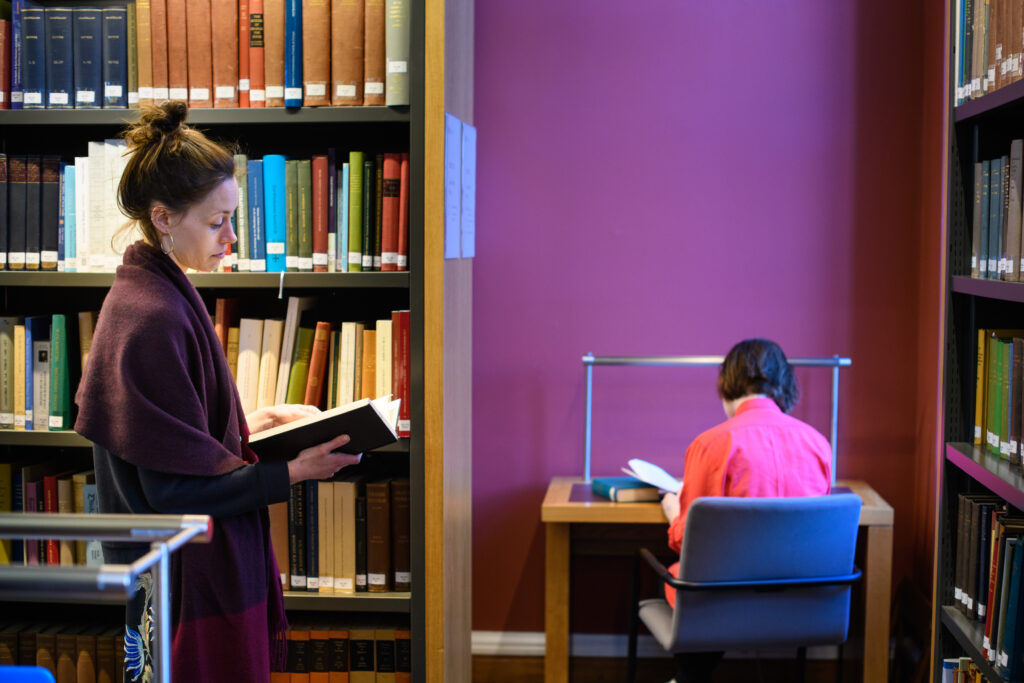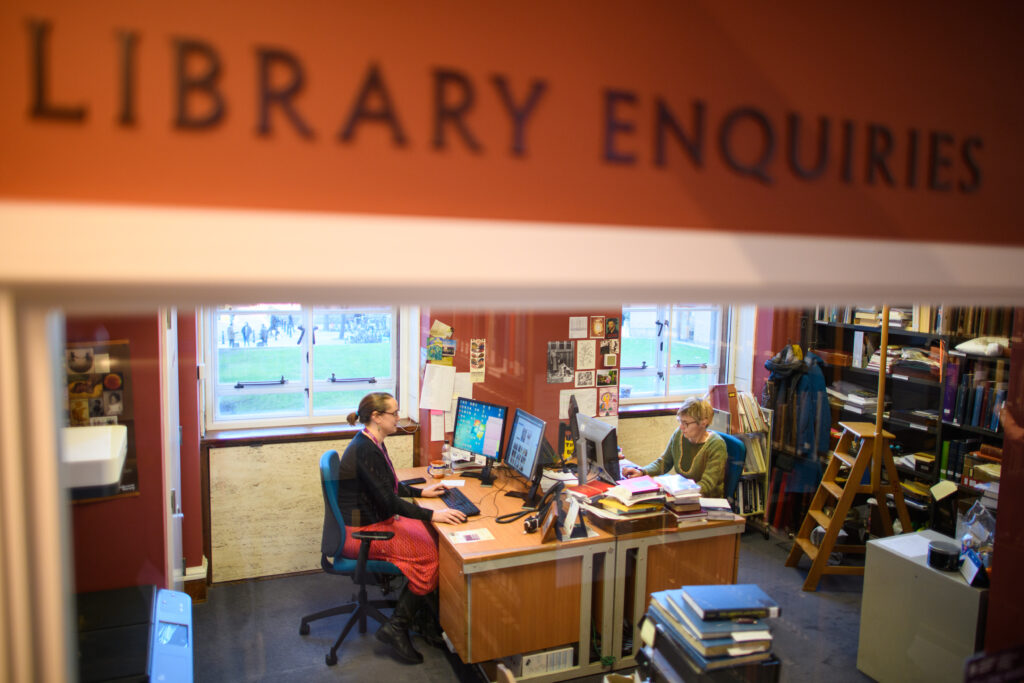This blog post was written by Neil Stewart, Head of IHR Library & Digital.
I started as Head of IHR Library & Digital in February 2023, having moved up the road from LSE Library. I spent nearly ten years at LSE in two stints, doing things with digital libraries and digitised collections, amongst many other matters. When I was lucky enough to be offered the job at the IHR I didn’t hesitate—the opportunity to lead a world-class research library and to help develop the IHR’s digital offerings seemed like too good a chance to turn down.
Since starting at the IHR I have been struck by a number of things about working here. The first is the sense of collegiality shared by my colleagues. There is no sense of the kind of “town-gown divide” between academic and so-called “professional services” staff that sometimes is the case at other institutions. The second is the dedication of the Library & Digital team to making our resources and services available, to our patrons who come in person to use the library, to our members, and to broader “history-interested” communities.

Thirdly, I have been grappling with the intellectual and topographical challenges of finding my way around the University of London—the IHR is part of the School of Advanced Study (SAS), which is itself part of the wider University. IHR Library is one of four libraries in SAS, and then there is Senate House Library itself, a major research library in its own right. The complexities of the organisation are mirrored by the labyrinthine nature of Senate House. It is wonderful to work in an architectural masterpiece and London landmark, but I still find myself getting lost when I make a wrong turn!

One of the first pieces of work I was involved in after starting in my new role was a survey of our library users. I wanted to use this opportunity to reflect on the survey’s results and consider how they might inform the Strategy for Library & Digital that I am beginning to develop. The survey was conducted in April and May 2023 and received 86 responses, and I would like to thank all those who took the time and effort to complete it. I summarise some of the trends in the responses below, then briefly consider what these might mean for the Strategy.
Results showed that, by and large, respondents were either satisfied or very satisfied with the overall level of service the Library provides, with 93.3% of responses falling into those two categories. Particular areas of strength were “Helpfulness of library staff”, “Study environment”, and “Collections”, the first of which is particularly pleasing and testament to the hard work and dedication of the library team. Satisfaction levels were less high (though still tolerably good) around “Print, scan and copy facilities”, “Range of Electronic Resources”, and “Computing facilities”.
This year we also had respondents order their relative priorities for the library by asking “Which of the following should the library focus on as a priority? Please order them from most important (top) to least important (bottom).” Probably predictably, given the strengths of the library, “Print collections” came out on top by a clear margin, followed by “Providing a quiet study space” and “Library opening hours”. There was also some support for “Electronic resources” and “Digitisation on demand service” and, interestingly, almost none for “Providing informal/group study space”. These preferences were echoed in the free-text comments we received, this one being representative: “Keep up and continue to extend the collection of printed books and journals. I use digital resources a lot […] but it would be a disaster for my own research if a ‘dash for digital’ were at the expense of print.”

So how might the survey’s findings help inform the development of a strategy for the IHR’s combined Library & Digital offerings? First, we need to recognise, celebrate, and build on the strengths of our print collections, something that our users clearly value. Second, we need to build our digital offerings to complement our print collections. Indeed, approaches such as digitisation on demand, wider collection digitisation, and virtual reading room services would “open up” our print collections without being to their detriment. Finally, we need to make these services available via state of the art facilities, be that the physical library space itself or the library’s website and other areas of online engagement. For those interested in learning more about the developing strategy, I will blog about it again when it is fully realised, in or around September 2023.

Neil is Head of the Library at the IHR. He is responsible for the operational management and strategic development of its collections and services. He is also responsible for the IHR’s digital offerings. Neil holds a BSc in Politics and Philosophy from the University of Bristol, an MA in International Relations from the University of Manchester and an MA in Library and Information Studies from University College London. He has worked at a variety of libraries in higher education, most recently at the library of the London School of Economics and Political Science.

